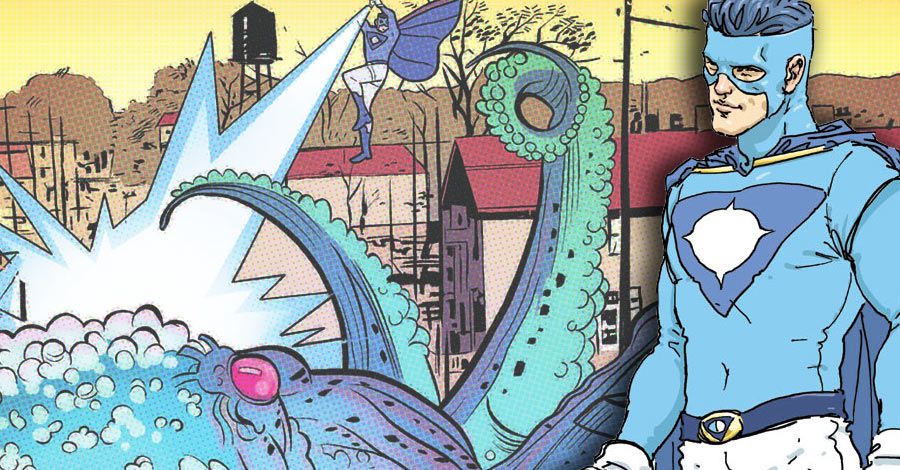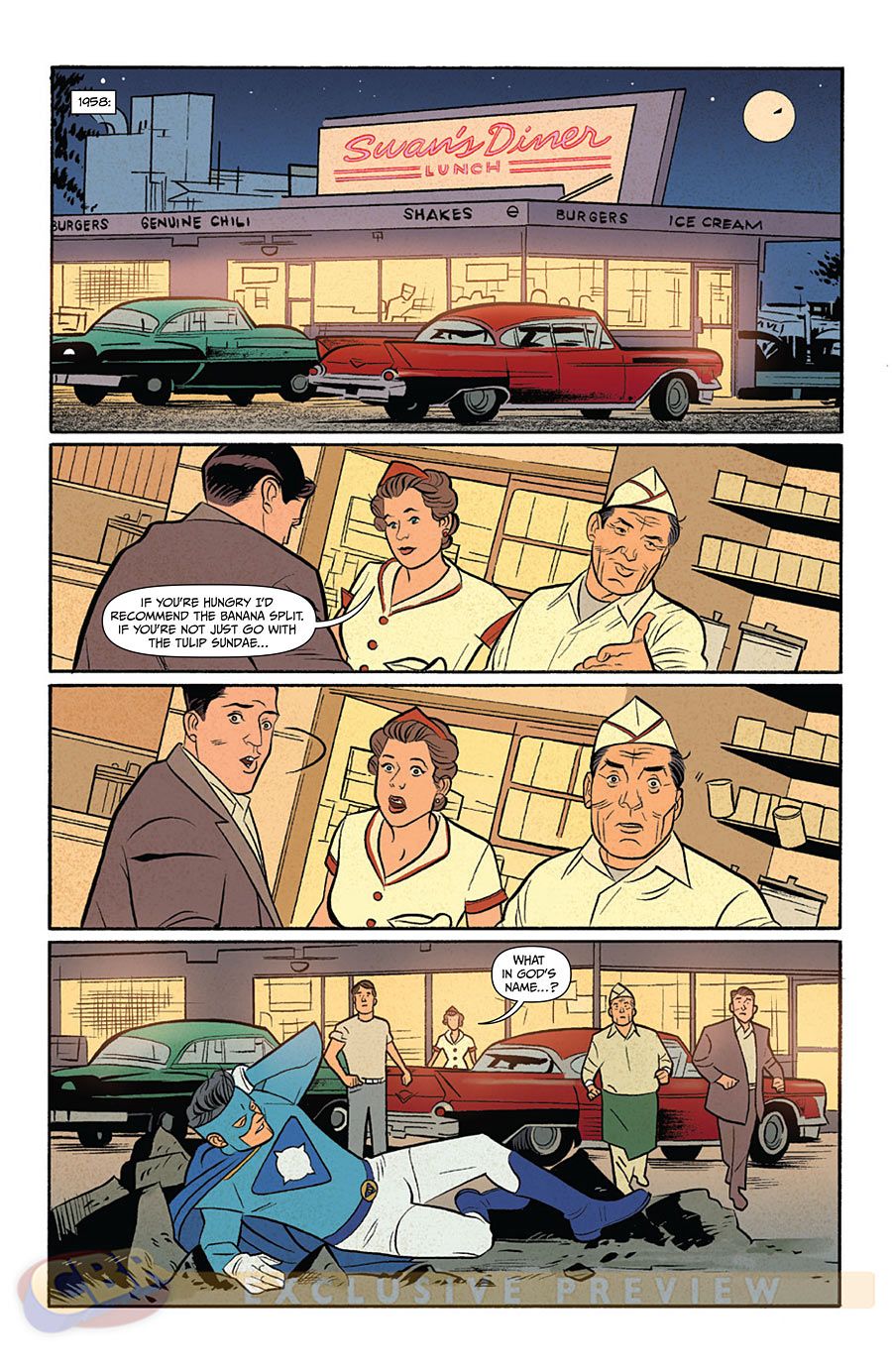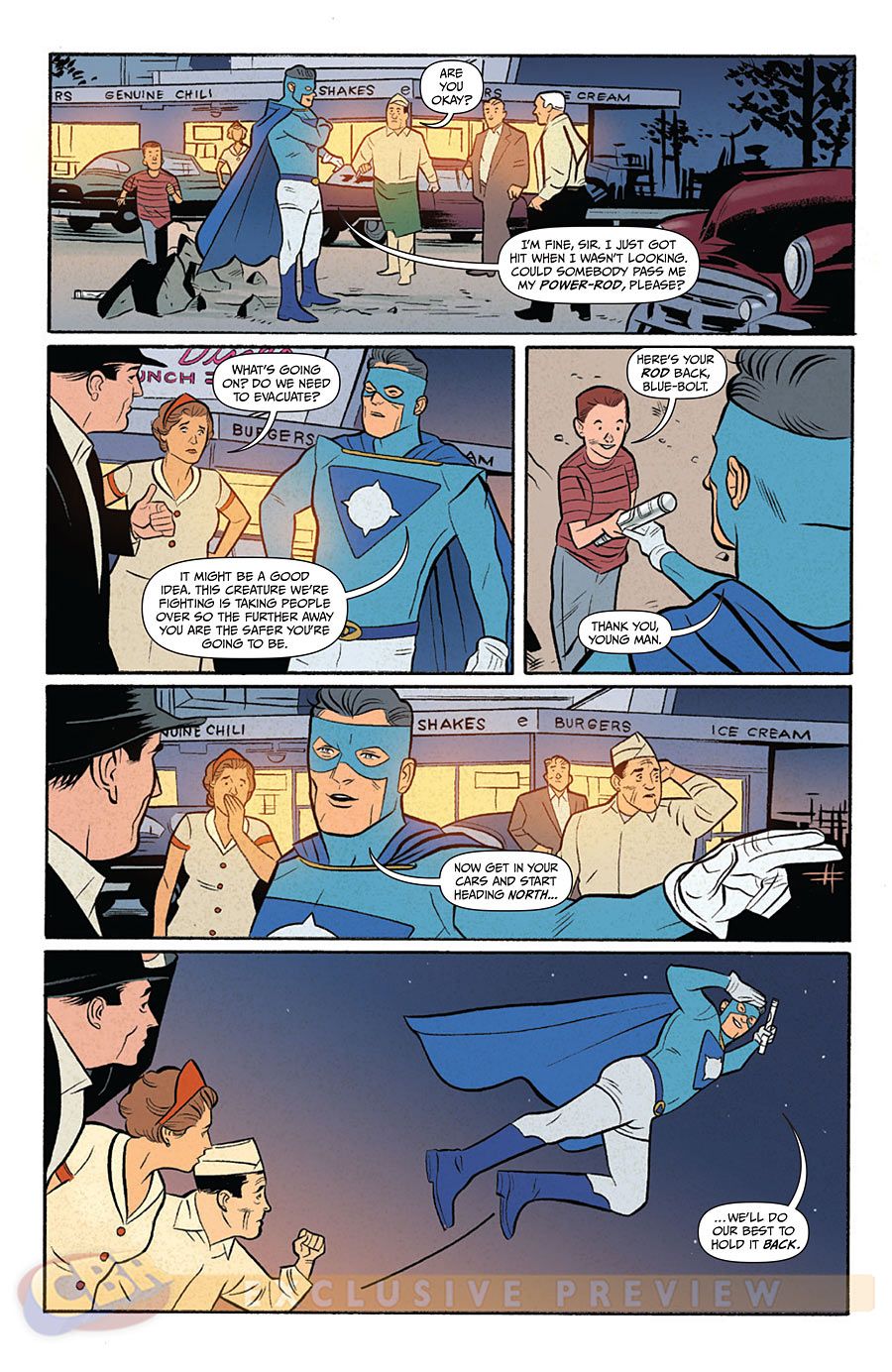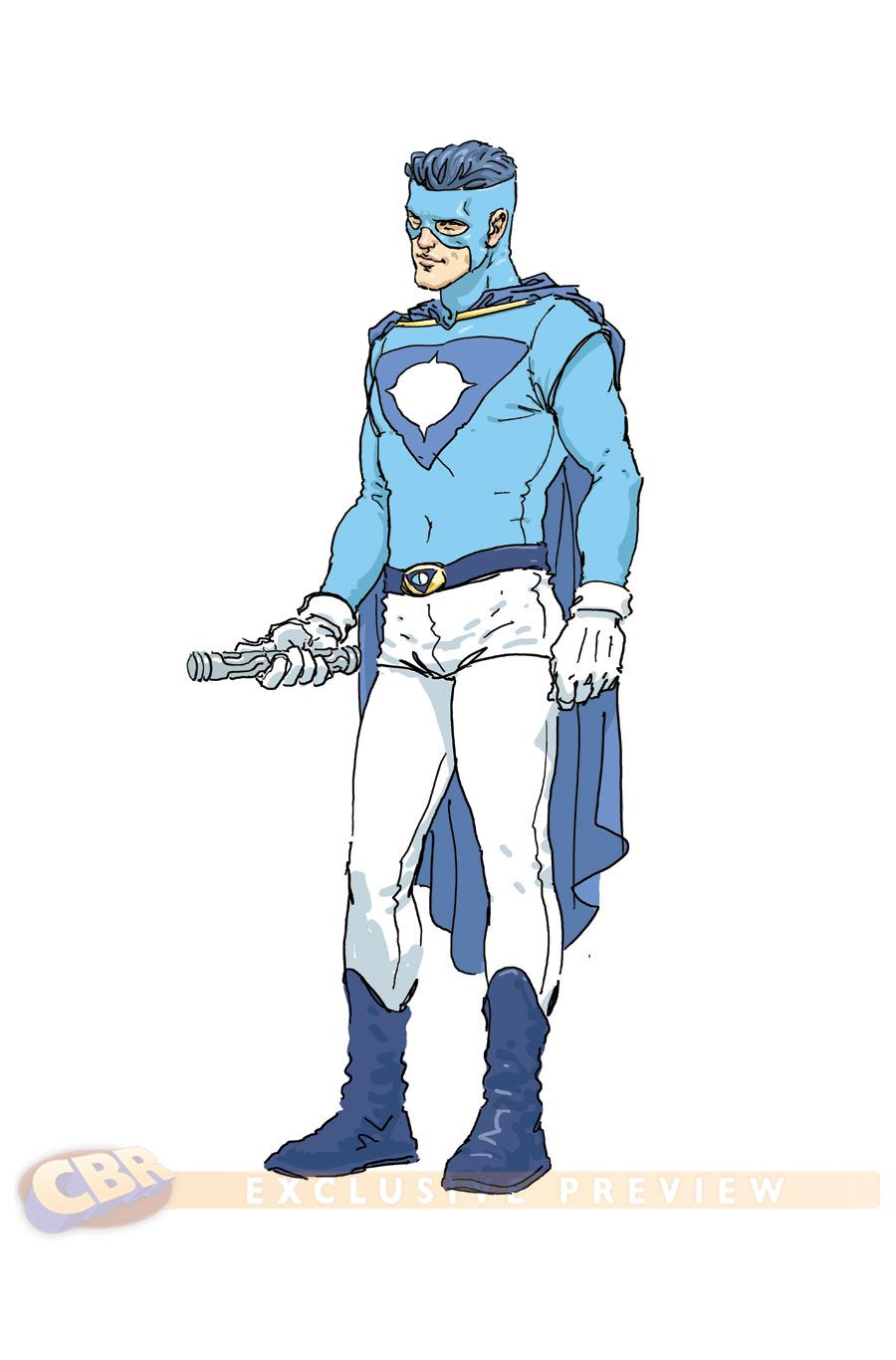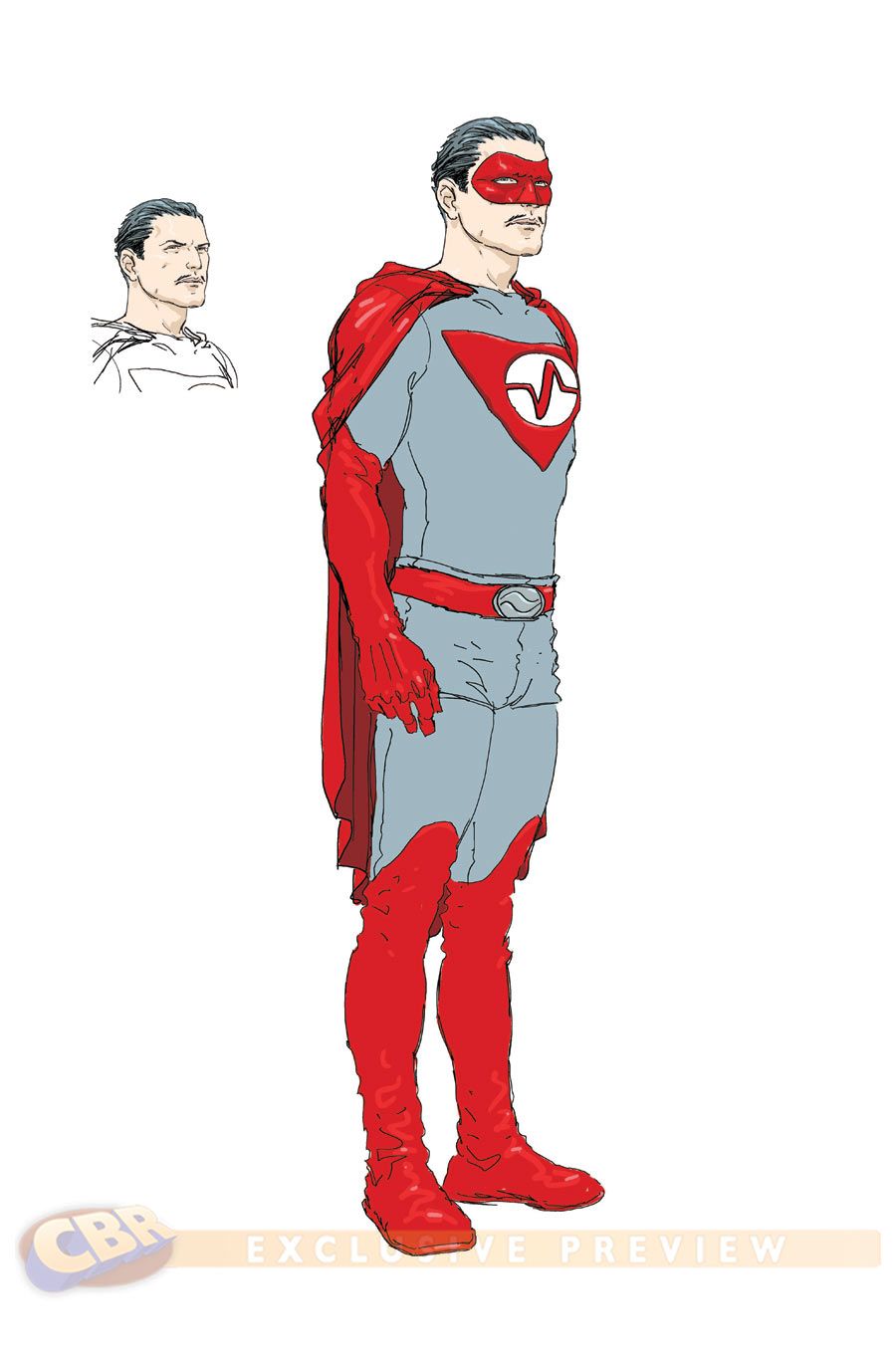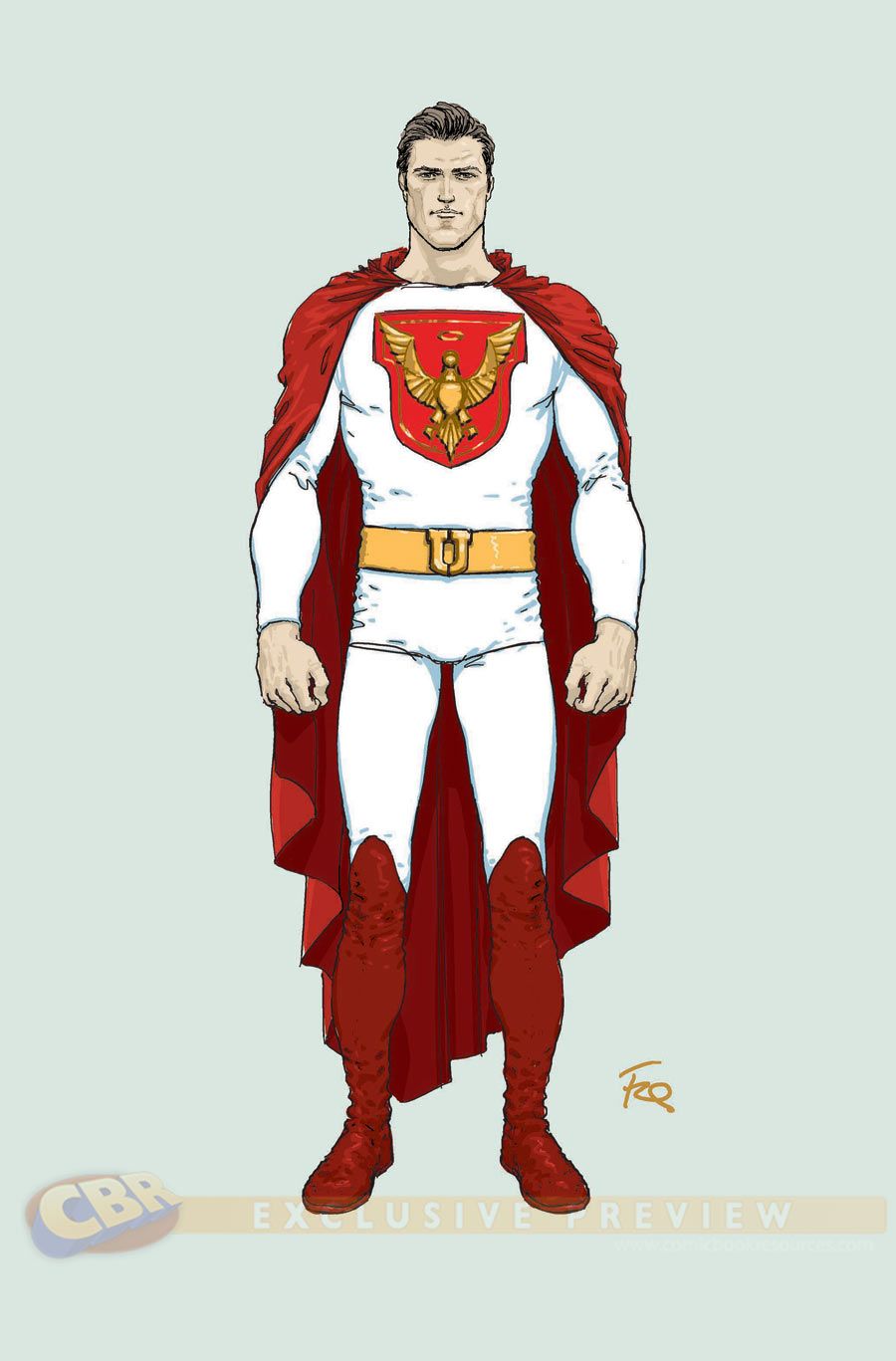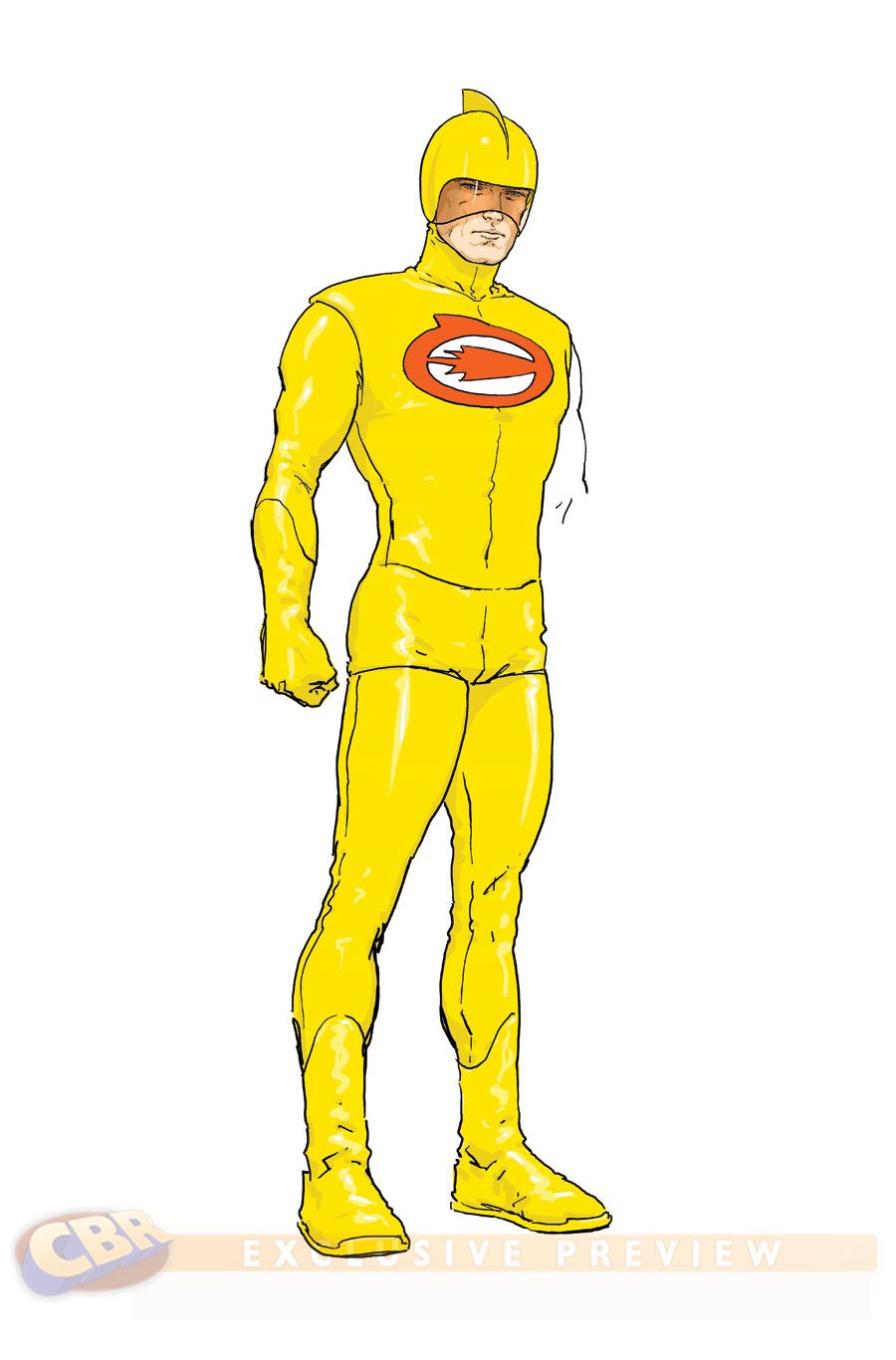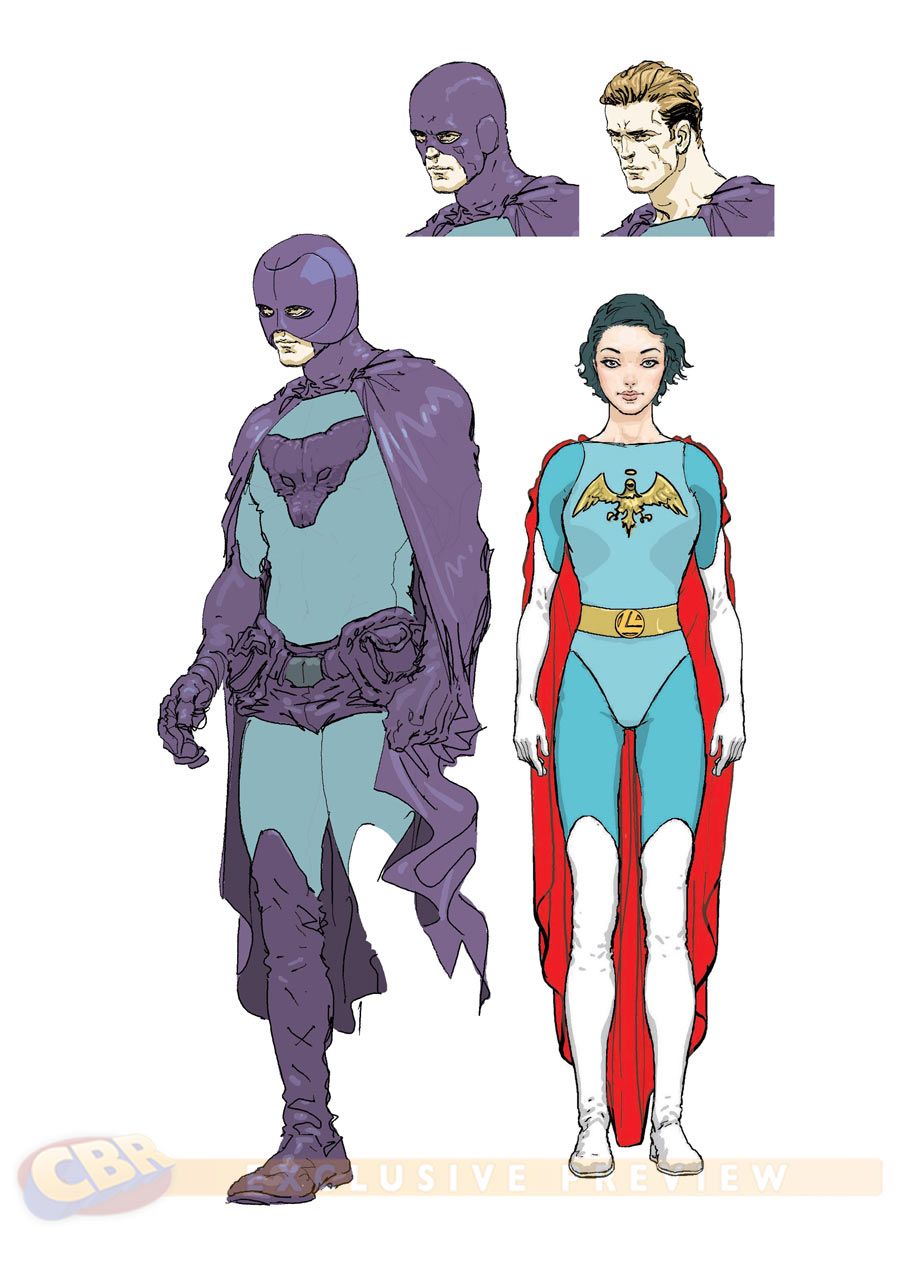While Mark Millar and Frank Quitely's Image Comics superhero epic "Jupiter's Legacy" has been on a break as the artist continues to work on the final issues, Millar's other work has gone into overdrive -- or so it seems.
With "Chrononauts" having just launched, the movie adaptation of "Kingsman: The Secret Service" still raking in box office dollars and a few more movie deals just hitting the Hollywood trades, it appears as though Millar is at a productive peak. But the writer swears his work is much more steady and simple than the bursts of releases seem to indicate. "That's just the way it lands," he told CBR News. "I work about 8 to 6 on weekdays and do this like a job. I clock in and do 18 issues a year. It always looks like there are a billion things going on, though most of those are outside my control -- something being picked up as a film, for example. I wish there was a grand plan, but I'm not that smart!"
RELATED: Universal Options Mark Millar and Sean Murphy's "Chrononauts"
However, one area where a "grand plan" has come into play is with "Jupiter's Circle" -- the brand-new prequel series to "Legacy" that arrives in stores this Wednesday. Based on notes and designs Millar and Quitely cooked up while developing their series, the period piece drama welcomes artist Wilfredo Torres for the story of caped wonder the Utopian's heyday with the superhero pals he earned powers alongside near the turn of the 20th Century. Unlike "Legacy," which explores the fallout of the next generation's hubris, "Circle" looks behind the scenes of an idyllic superhero past and finds some strange secrets there.
In advance of the series' debut, Millar opened up on the process of bringing "Jupiter's Circle" to life. Below, he shares for the first time the character designs from Frank Quitely that set the stage for their own personal take on the Silver Age, and he goes into detail on how outdated superhero tropes will get an intense human revision as the "Legacy" sister series gets underway.
CBR News: Mark, with the launch of "Jupiter's Circle," you're expanding the world of "Jupiter's Legacy," though I get the sense this expansion kind of snuck up on you. You've said in the past that you typically do a lot of note-taking on your comic concepts before scripting. How did the notes and background for "Legacy" push themselves into becoming their own series?
Mark Millar: It was funny, because I'd never actually done so much preparation for a series as I'd done for "Jupiter's Legacy." I thought about it for about two years, maybe three years before doing it. When it came time to actually write it, I had this performance anxiety because if I was going to be remembered in the future for any big superhero epic, I wanted it to be this one. This was the thing I wanted to be most proud of, so I put all this prep into it. I actually spent eight weeks doing nothing except planning. Literally, I didn't write one word or dialogue or one page description. I just worked out all the bac story for all the characters.
You know when you watch the proper 1977 "Star Wars" and you're kind of aware that you're stepping into a world that's existed for a long time? It's a working universe with its own mechanics that has a history going back at least a generation, and you become aware of that over the course of the movie through the character interaction. I just wanted these characters to have a universe of their own. That's not necessarily meaning there were lots and lots of characters, but that the interactions between everyone made complete sense. I worked out the backstory of all the parents because "Jupiter's Legacy" is about the children of all these heroes. I had to know how the parents felt about their kids and how they felt about each other.
In the end, that material became so complex and so interesting that I just wanted to write the book, and I'm a great believer in not taking too long. I like to go in and be quite concise. I created "Old Man Logan" or "Civil War" or whatever in a small number of issues. I like to come in and get off the stage quickly. But this one just felt thick. I did my ten-issue series of "Jupiter's Legacy," and then I had 12 issues sitting there of "Jupiter's Circle."
One of the nice things about Frank Quitely being so late was that there was a massive gap in the schedule between volumes one and two. On the one hand, that's tragic because I really wanted to get the second half of that story out as quickly as possible. But on the other hand, it allowed me to get into this backstory. And it was my agent who was saying, "I love the stuff you were telling me about the backstory on 'Jupiter's Legacy.' Why don't you just tell that story?" And it's great. I think in some ways I prefer this story to "Legacy" because it's so unique. It's the kind of superhero story I've always wanted to tell.
One thing talked about in the main series is that when the initial group of superheroes landed in America in the '50s and '60s, they helped bring about a ind of Golden Age in society. That seems to be a hard background to tell a story in since stories thrive on conflict. How do you solve that problem?
One thing that is very important for these characters that we establish in the first issue is that they'll never interfere with us. It's a very classical DC superhero trope. People used to write in and say, "Why doesn't Superman stop World War II?" or, "Why doesn't Superman solve world hunger?" DC's response was that superheroes took a solemn vow never to interfere with social growth. On the one hand, that's a cop out -- but there's something weirdly fascinating about that, too.
What "Jupiter's Circle" is about is that old-fashioned idea that they're not there to make the world perfect. They're there to stop bank robbers and then be on their way. They stop supervillains and alien invasions -- the old-fashioned kind of stuff we never see anymore. It's all secret identities and all these things we've lost in comics. I like this idea of really straightforward guys with white collar careers -- they're all doctors or stock brokers -- who are very old-fashioned with their ties and their secret identities. They were regular superheroes for the 1950s and '60s. Then, it's their children in "Jupiter's Legacy" who say that they're going to solve all of society's problems, and of course, it goes horribly wrong.
But what I thought with "Jupiter's Circle" was telling that story that looked slightly old-fashioned, superficially, but once we go behind it and see the interpersonal relationships, it starts to feel deeper, or more like a European movie from that period. It's like a '60s French film about what's going on in these heroes' private lives. Not in a crass way, but I love the idea of looking at what happens between alien invasions with everyone's wives and children. It's all about how they feel about each other. It ended up feeling very different than any superhero comic I've ever read, and I think that's what will be fascinating for the readers.
Some of these characters we met in the main series and saw a glimpse of what they were like when they got their powers, or when they were in their prime, but most of them are quickly moved off the stage. What's it like to expand those characters as younger people? Has anything about that process surprised you?
The thing that's fascinating was something that occurred to me talking with a friend about "The Godfather Part II." He said there's something interesting about telling two concurrent stories, where the father and son are the same age and telling the story of their life -- Michael Corleone and Vito Corleone both being 28 or however old they are in that film. I love this idea that we're seeing the children, but we can go back and see the parents at the same age, because I wanted to explore this idea of the idealized mother and father figures. We all do that. We always imagine our parents as young, perfect people who were never our age. So here, I get to see what these idealized guys were actually like, and the honest truth is that at any point in human history, people have always been the same. The tagline of this story is, "Even your parents were young once." There were moments where your mom and dad were nervous when talking to each other and going on their first date.
And I think that Bill Sienkiewicz cover gets that idea across pretty directly.
[Laughs] It's like a "Mad Men" box set cover, or one of those old '60s spy novels. Isn't it fantastic?
I haven't reread all the "Legacy" issues yet to see how the two series synch up, but one thing I don't think we've gotten a lot of specifics on yet is where this new name comes from. "Jupiter's Circle." Where does that idea of a circle come in both literally and thematically to this story?
I wanted to tell something about that table that you get in superhero headquarters. [Laughs] It's just one of those visuals that I think I've known my whole life, like in those old 1960s Filmation cartoons that we got in Scotland ten years later and the Justice League was standing around a big table talking about how to save the world. That's what I think of when I think of a superhero team.
But it's also a circle of friends. It's a social circle of superheroes. It's what they're doing with each other when they're just out dressed in civilian clothes. That's the circle of them as normal people that this book is really all about. It's less about them gearing up to fight a monster and more about the tensions in the background of their lives, which are really dramatic and interesting.
And there are mysteries about these characters baked into "Legacy" as a series -- chief amongst them, the real root or purpose of the powers they got from these godlike aliens. I don't feel like you're presenting this series as, "You have to read 'Circle' to get the answers to those questions," but how do you connect the two books in terms of what story and what information is revealed in each?
I think that both books are satisfying in their own right, but they are set up as companion or sister series. You're going to find out more about the island where they got their powers in "Circle" and the weird experiences the superheroes had themselves. You start to get an inkling of what was going on there. There's more than meets the eye. I love that simple Golden Age origin where they just go to an island and come back with powers, but you have to ask, "What was really going on there?" That's something that continues through the whole series.
The publishing schedule is actually very interesting, because you're going to get certain reveals around the same time. We're going to be running the final five issues of "Jupiter's Legacy" around the same time as the ending of "Jupiter's Circle."
Do you know the exact dates where you're shooting to get "Legacy" finished by, or do you just say, "When I have X amount of issues in hand, I'll worry about soliciting this all?"
Yeah, what we've done on "Jupiter's Circle" is that I've written almost the entire series. There's a volume 1 and a volume 2, and the artwork on volume 1 is almost completely done now, which is great. So the scheduling on that is to do it monthly. I think we're actually double shipping one month. Then the schedule on "Legacy" is that we're stockpiling it. One thing I've really learned about the Millarworld books is just to gather them in the drawer and then release them monthly. Every artist I've worked with thinks they're twice as fast as they are. They mean well and have the best of intentions, but they're never as fast as they think. I've decided to take projection out of the equation entirely and just get the whole thing in the drawer. That's one of the beauties of doing limited runs -- that I can bank a whole series.
But it's expensive! The Millarworld rates are much higher than Marvel and DC, so we are spending a lot of money doing it all at once. As a reader, that ends up driving me nuts, and as a writer as well, because I want to see things come out regularly.
Of course, the huge change here from "Legacy" -- and also a big draw for the book -- is Wilfredo Torres' art. I feel like there are people out there who may take an initial glance at his lines and draw parallels with either a throwback style or an animated kind of thing, but his strengths seem to lie in a very elegant kind of storytelling focus. What has it been like working with him in this world as opposed to Frank?
It's great. Generally, we're totally shifting gears in order to see these characters a generation apart from where we've seen them before. It feels very natural to have a different artist for that. It's like seeing Ian McKellan play Magneto and then Michael Fassbender playing Magneto. And it doesn't feel like a fudge because they're that generation apart. Of course they'd look younger in this series. So having an artist more suited to the style of the period feels right because Frank Quitely's art doesn't feel very 1959. It feels like a modern day interpretation of that kind of world.
"Mad Men" has been our touchstone in that respect -- the look and the colors of the show, the background and the clothes and the hair. Fred kind of specializes in that. It's one of the reasons he was referred to me by friends. They kept saying, "He'd be perfect for that. He can draw these beautiful cars with tail fins and people looking impeccable." And he's really pulled it off. I actually don't think it looks anything like that animated style. I think it has a kind of photorealistic style like David Mazzuchelli or Chris Samnee or Michael Lark. It's got more of that vibe.
"Jupiter's Circle" #1 arrives this Wednesday from Image Comics.

